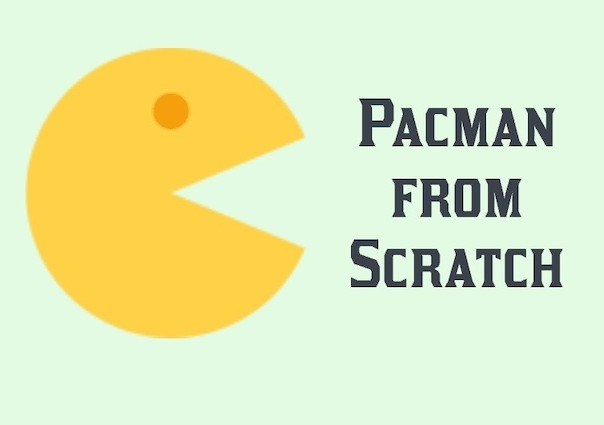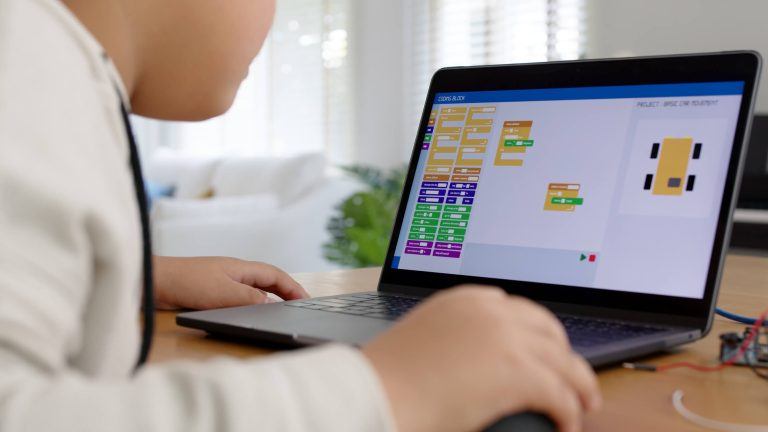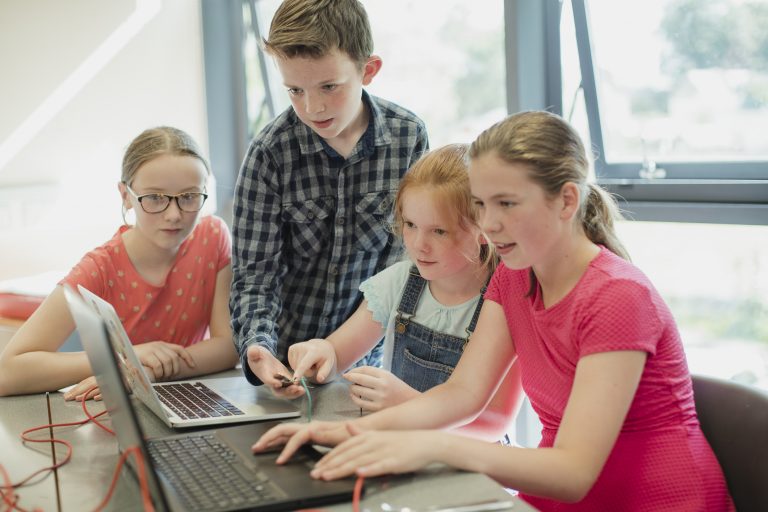In 2019, the U.S. Bureau of Labor Statistics reported that there were a total of 2.5 million people employed in jobs that required some degree of software development (including computer programmers and web developers). They also predicted that the number of jobs in software development would rapidly grow between 2018 to 2028 by 21%—almost four times as much as the average growth rate of most jobs (which is 5%) in ten years.
There’s no denying it; coding is the occupation of the future. As a result, programmers are in high demand. As long as our technology continues to change and evolve, we will need people specializing in communicating, changing, and manipulating this technology.
Therefore, it is no small wonder why many parents and teachers want kids to learn to code as early as possible. Having an early start would give them quite the advantage.
But for someone who’s never coded before, learning and memorizing all the technicalities involved can be incredibly intimidating. So if you want your child to have a healthy, beneficial interest in coding from an early age, it’s important to pay attention to the teaching method because coding can be incredibly frustrating—even for professional programmers!
A strict, by-the-book approach may not work too well for extremely young children. And we can’t imagine pre-teens and teens having that much love for it, either.
So what’s the best way to introduce coding for kids?
Games.
Table of Contents
Why Coding Games for Kids?
From my experience, there’s no better way to engage children than through games. This way, they hardly feel like they’re studying. Not only do they get to explore what’s beyond the boundaries of some of their favorite games, but they may also be motivated to contribute their own ideas—all while learning the basics of coding languages.
Related Reading:
Coding games provide the perfect solution for acquiring knowledge in a fun, creative setting.
And while there are many coding games for kids out there, we’re going to cover 21 of the best ones:
CODAKID

CodaKid is an award-winning online coding school for kids that uses popular games like Minecraft and Roblox to teach programming concepts (and practical applications of said concepts). Their method of instruction veers more towards the hands-on, project-based approach as they encourage students to learn by doing.
With CodaKid, your child will learn how to build professional-grade video games, apps, websites, and more.
Although CodaKid is not technically a coding game, all the courses in the curriculum use popular games to engage, entertain, and challenge their students. In addition, by creating their own mods (game modifications) using actual coding languages like Java, kids get to experience real text-based programming first-hand.
CodaKid’s self-paced, digital classes include live support and instructor guidance via messaging and screen share. Kids are free to ask questions during the lesson properly.
At first glance, CodaKid projects may seem a little intimidating, especially compared to the other games and courses on this list. But for the right type of student – and for kids who genuinely enjoy coding – the experience can be immensely satisfying.
SCRATCH

Scratch can refer to both the programming language and the actual website. This is because both are under the same company.
Scratch the programming language is, of course, a drag-and-drop, block-based programming language initially designed for kids aged 8 to 16. It serves as an excellent starting point for kids and beginner coders to grasp programming fundamentals without worrying about technicalities (i.e., terms, concepts, syntax, jargon, etc.).
Scratch, the website, is basically a platform that allows kids to create animations, short programs, and interactive games using the Scratch coding language. They can also share their creations with other players/creators in the Scratch community (which, to this day, is pretty active). By focusing primarily on fun and play, kids learn how to think creatively, systematically, and sequentially—all valuable skills involved in coding.
The Scratch website also houses a wide range of useful video tutorials and PDF guides to help budding kid developers get started.
Scratch is arguably one of the most popular names in coding for kids (both the language and the website) because of how far it revolutionized the game. Scratch has made programming far more accessible now than it was fifteen, twenty years ago by eliminating the technicalities and simplifying coding down to its absolute, fundamental basics.
Related Reading:
BLOCKLY GAMES
Like Scratch, the word Blockly can refer to two different things. One is an open-source, client-side library that uses block-based visual programming (again, just like scratch) and editors, making it extremely user- and beginner-friendly. On the other hand, it’s catered specifically for people with little to no prior experience in coding.
Related Reading:
The other is Blockly Games, a website designed for children aged 8 and up. It currently contains eight games that incorporate the Blockly programming language to teach kids the foundations of programming (sequences, cause-and-effect, loops, and the like).
The games are basically different challenges that the player must solve by dragging blocks (representing lines of code) from the side and dropping them on the screen. After they construct their script out of blocks, they can run the program to see if it correctly solves the challenge.

For instance, the “Maze” game requires players to bring the avatar from the starting point to the endpoint marked on the map using directional blocks, i.e., “move forward,” “turn left,” “turn right,” etc. If they execute the correct sequence, Blockly shows them their code in actual JavaScript language.
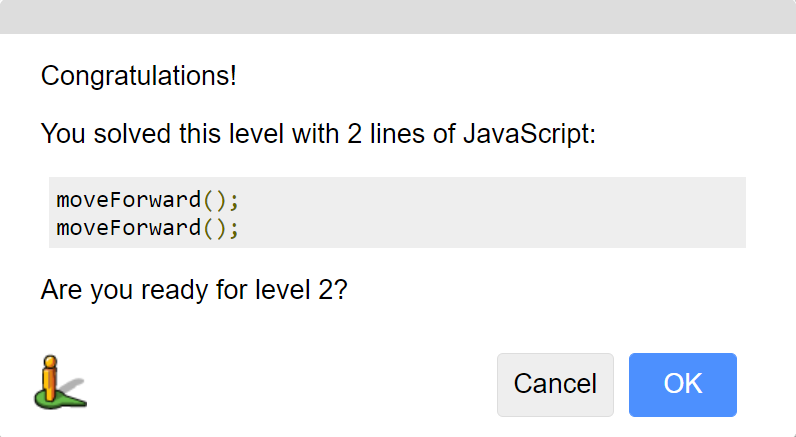
The games may seem simple, but they’re definitely one of the best ways young children can familiarize themselves with coding concepts!
CODEMONKEY
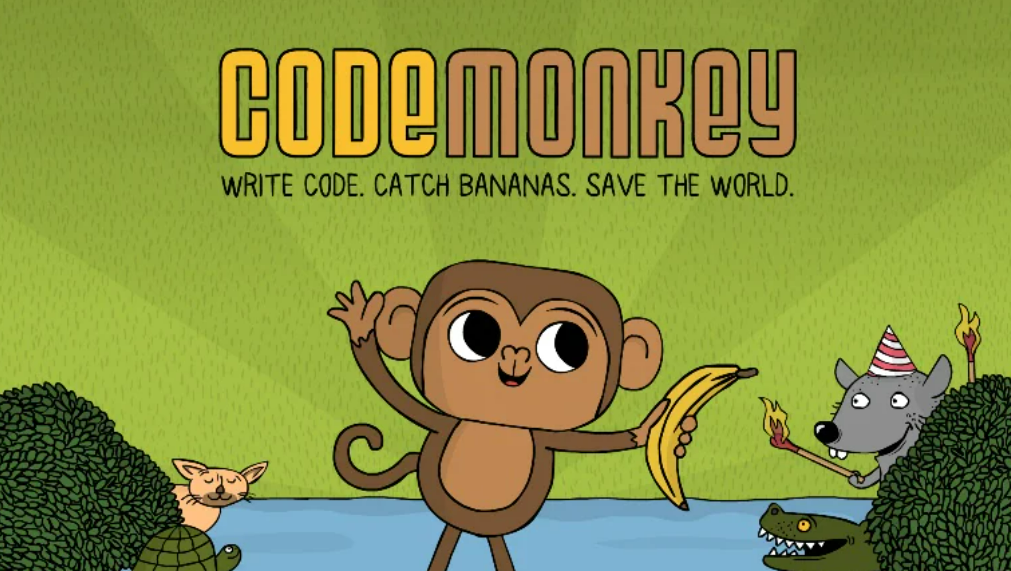
This fun, educational, game-based platform teaches coding for kids both with and without prior experience. Their award-winning K-8 curriculum is chockfull of educational resources for students of different grades and different levels.
Related Reading:
CodeMonkey utilizes game-based learning to keep kids interested and excited for more, from coding basics to coding with real programming languages. The graphics are adorable, the language incredibly kid-friendly, and the games all fun and challenging.
Kids will have to help Monkey (CodeMonkey’s titular character) cross the river, solve math problems with Dodo, or collect bananas for Turtle—all by writing code in CodeMonkey’s own text-based editor.
One of the languages that CodeMonkey uses is CoffeeScript—a programming language similar to JavaScript. However, it uses a friendlier syntax similar to English, making it ideal for kids and beginner coders.
CODE COMBAT

One of the most straightforward coding games for kids, CodeCombat leverages kids’ love for fantasy stories and elements (knights, dragons, heroes, warriors) to teach them coding fundamentals.
Each lesson is introduced as another chapter or milestone in the overarching storyline of the CodeCombat universe. This minimizes the complex technicalities of coding and focuses instead on practical application. The bold, colorful graphics and distinct character designs further add to the richness of the story and the game’s playability.
Related Reading:
The setting is also extremely extensive, with an average of 12 levels per stage and around 10 stages in total. Kids can choose from 17 different characters, each with their own unique backgrounds and personalities.
Playable characters coupled with beautifully designed RPG maps, art assets, and immersive sound make for one incredibly addictive coding game for kids.
Players go through each level by coding the appropriate commands and running their scripts to test them. It’s worth noting that Code Combat’s script editor runs each line of code as soon as the player finishes writing it. This is a fairly time-efficient process that allows kids to proof their script line by line rather than all at once. This minimizes stress and frustration, consequently keeping kids engaged for far longer.
Do note that Code Combat’s lessons are aimed at children aged 8 and up who have some degree of familiarity with coding concepts and language. Of course, beginners are more than welcome to play it, but they may find the first few lessons confusing.
BITSBOX
Bitsbox is one of the (very) few coding games for kids that have both a digital and a physical option. And that, if nothing else, is more than enough to warrant it a spot on our list.
Described as a “learning system” that teaches kids how to code (primarily games and applications), Bitsbox can be likened to a subscription service for programming projects. Each month, the company sends you a box full of new “crazy fun app projects” for your child to tackle.
The difficulty of these projects ranges from simple, user-friendly app creation to extensive, more advanced challenges. What’s more, you can choose to have your Bitsbox sent to you as a digital package or have a physical kit delivered right to your front door!
Related Reading:
Aside from the unplugged factor, Bitsbox is also incredibly customizable. You can pick from three main package types (basic, deluxe, and digital) and numerous subscription plans. This allows you to shape your child’s coding experience in a way that best suits your interests, circumstances, and budget.
Here’s a quick overview of the three package types:
- Digital. This purely digital package is the least expensive of the three. It provides the same great content found in the physical Basic Bitsbox—only as printable PDFs. It’s roughly the same great Bitsbox experience in an affordable, eco-friendly way!
- Basic. This physical package contains a dozen app projects and a nifty binder to keep them organized. Contents include Coding Super cards, stickers, a chart, a Grownup Guide, and more. Of course, kids will still need to use the Simple Bitsbox website to work on their monthly projects.
- Deluxe. Finally, the Deluxe Bitsbox. It contains everything found in the Basic package and some extra goodies. Trading cards, for instance, extra sticker sheets, temporary tattoos, and a Mystery Toy—just to name a few! It’s undeniably their priciest box but, if you can cover it, we’d say the experience (and the prizes) is well worth the tag!
CODE KARTS
Ready, Set, Code!
Code Karts: Pre-Coding Logic is a handy app resource that introduces kids to computer coding topics and concepts using 70+ levels of challenging racetrack puzzles. Players have to use direction bricks to get the racecar to the finish line in the fastest time possible. The game gets progressively more challenging with each level, forcing kids to think carefully and creatively as they map out the best possible route.
Aside from familiarizing them with the drag-and-drop system of most visual, block-based programming languages, Code Karts also helps develop observation, concentration, and logic skills.
What’s more, Code Karts is a phone app. This means you can bring the game anywhere and play it, so long as it is installed on a smartphone or tablet. It is also offered in over 20 different languages, which speaks of a level of diversity and accessibility that we can appreciate.
MINECRAFT
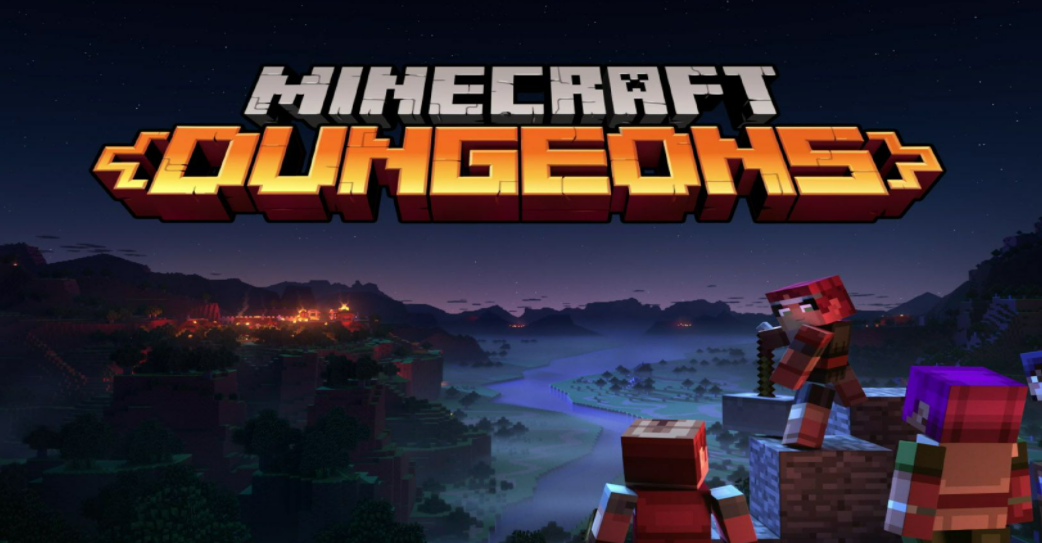
Minecraft is by far one of the most popular computer games. Despite being released a decade ago, the Minecraft community continues to grow and expand, and it shows no signs of stopping. Even people who have never played the game are familiar with the name (and the iconic pixelated graphics). Available on practically any device you can think of (PC, Xbox, smartphones, Nintendo Switch, and so on), Minecraft has become an integral part of popular culture.
It’s also worth mentioning that sandbox worlds, virtually limitless play options, and no specific rules make Minecraft one of the best games for people to release their creativity in.
Although it’s not specifically marketed as a coding game for kids, Minecraft can still help children learn how to code through “Minecraft Coding”—a creative process specifically performed by coders who access Minecraft’s source code to make changes to the game. This is actually fairly common practice among the Minecraft community.
These source code changes are referred to as “Minecraft mods” (short for modification), and people use them to add unique items to the game (like weapons, clothing, elements, mobs/monsters, etc.). Mods are also one of the reasons the Minecraft community continues to thrive. As more players join Minecraft and learn how to program mods, they eventually put out new mod content for both new and old players to try.
Related Reading:
ROBLOX
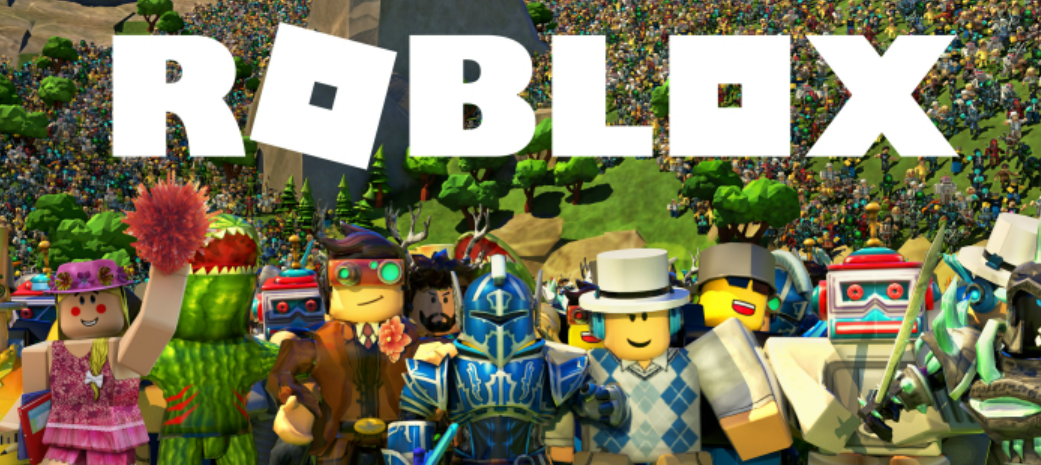
Just like Minecraft, Roblox is another wildly popular computer game (specifically, online gaming platform and game creation system) with a dedicated community that continues to grow.
Originally released in 2006, Roblox appealed to a wide audience of children, teens, and young adults thanks to its unique (for its time) concept: hosting games made by Roblox players for Roblox players. With a Roblox account, players can play any of the hundreds of thousands (if not millions) of Roblox games for free.
Alternatively, they can also create a Roblox game and host it on the Roblox platform for no cost at all. Roblox comes with a Roblox Studio that allows users to create games using Lua—a powerful and lightweight programming language used to write all Roblox games.
Once the game is created and tested, the user can publish it to the Roblox platform for other players to see and play.
Related Reading:
Unlike the other coding games on this list, Roblox (like Minecraft) doesn’t have any step-by-step instructions, lessons, or guides to coding. Ergo, we definitely cannot recommend it for beginners. However, kids and teenagers with a fairly decent grasp of programming will undoubtedly find Roblox (and, by extension, Roblox Studio) intuitive, organized, and easy to use.
HOUR OF CODE (CODE.ORG)
Code.org is a non-profit organization that aims to introduce kids worldwide to computer science and computer programming. It is currently the leading provider of K-12 computer science curriculum for some of the largest school districts in the U.S.
Code.org offers full digital courses for K-12 students and beyond, including career path exploration, extended learning, scholarships, internships, and more.
None of Code.org’s lessons are taught as games for kids. However, their Hour of Code activities (now numbering more than 500) are all coding games perfect for students who don’t have time for a full-length course. The games are all professionally designed and incredibly diverse. They also cater to different interests, ages, and skill levels.
From a kid-friendly Frozen game that teaches coding concepts like loops to a Flappy Code tutorial that teaches you to write your own Flappy Bird-style game, your child is sure to find several games that they’ll wholeheartedly enjoy.
Related Reading:
STENCYL

Marketed as the “quickest and easiest way to make a game,” Stencyl is a video game development tool that allows users to design, construct, and publish games to virtually any platform without having to code. It follows the likes of Blockly and Scratch in that it utilizes a block-based visual programming language and a drag-and-drop scriptwriting style. Its interface is similar to that of Scratch, with coding blocks categorized in a column to the left of the script window.
Although not technically a coding game for kids either, Stencyl has made it to this list as a powerful game creation software for beginners and hopeful developers. Like Roblox, Stencyl also takes care of hosting and publishing games created using their program. In addition, users can release their applications for iOS, Android, Windows, Mac, Linux, and HTML5 systems—successfully catering to a broader audience.
Stencyl’s most popular and highly rated games include Super Dangerous Dungeons, Duke Dashington, Battle Slimes, Hue Ball, and Drum Cats.
KODABLE
Kodable is an interactive gaming platform and information resource great for teaching kids how to code. With over 70 different professionally designed lessons and trusted by over 50% of U.S. schools, you can be sure that the education your child receives through this website is top-notch. Their K-2 and 3rd–5th Grade courses combine both on-screen and off-screen activities to keep students fully entertained and engaged.
With the help of fuzzy little green characters and bright, colorful graphics, Kodable breaks down computer science topics into easy-to-understand concepts that kids can apply in real life. Their games (like Smeeborg, Asteroidia, and Maze Maker) also encourage skill development—specifically critical thinking, creativity, and collaboration.
All the materials needed for the coding games are included in the lessons. Students can also connect their courses to the Kodable app for further engagement. Although the unlimited version of Kodable is $29, they do offer a free trial period—so your kid can test before you invest!
CODEWARS
Codewars treats coding very much like an ancient art form (think the likes of sword-swinging or martial arts). Their headline, “achieve mastery through challenge,” perfectly sums up their teaching method: improve your coding skills through repetitive training, and then level them up using challenges.
You can “sharpen your skills” by completing “kata exercises” for your chosen language. You can rise through the ranks (and take on progressively challenging exercises suited to your level) by completing different kata lessons for your current rank. You can also discuss your script with the community for feedback, critique, or collaboration opportunities. You may even create your own kata exercises to challenge would-be developers out there!
Codewars offers lessons for over 20 different programming languages; PHP, JavaScript, Python, SQL, Ruby, C++, and more. Users also have access to a vast resource library and interactive community.
It’s worth noting, however, that while Codewars is primarily game-based, it isn’t beginner-friendly. As a result, people who choose to play Codewars will need a solid grasp of coding fundamentals and concepts.
CODE HUNT
One of the lesser-known coding games for kids, Code Hunt is a fairly simple – but still extensive – educational game from Microsoft Research.
Players can learn the basics of either C# or Java (player’s choice) by solving a series of coding puzzles across various stages—each a little more challenging than the last. All iterations start with some form of introduction and training, making it fairly beginner-friendly (compared to some other games on this list).
Coding concepts like loops and strings are introduced in cyphers and puzzles that the player must solve. Each layer also has an extra challenge: the player’s code will be evaluated for correct usage and code quality. This may be a little frustrating at first, but it’s a good taste of real-life practical coding.
While there’s no specified age range, we feel Code Hunt would be more suited for older kids (perhaps 10 years and up).
SWIFT PLAYGROUNDS
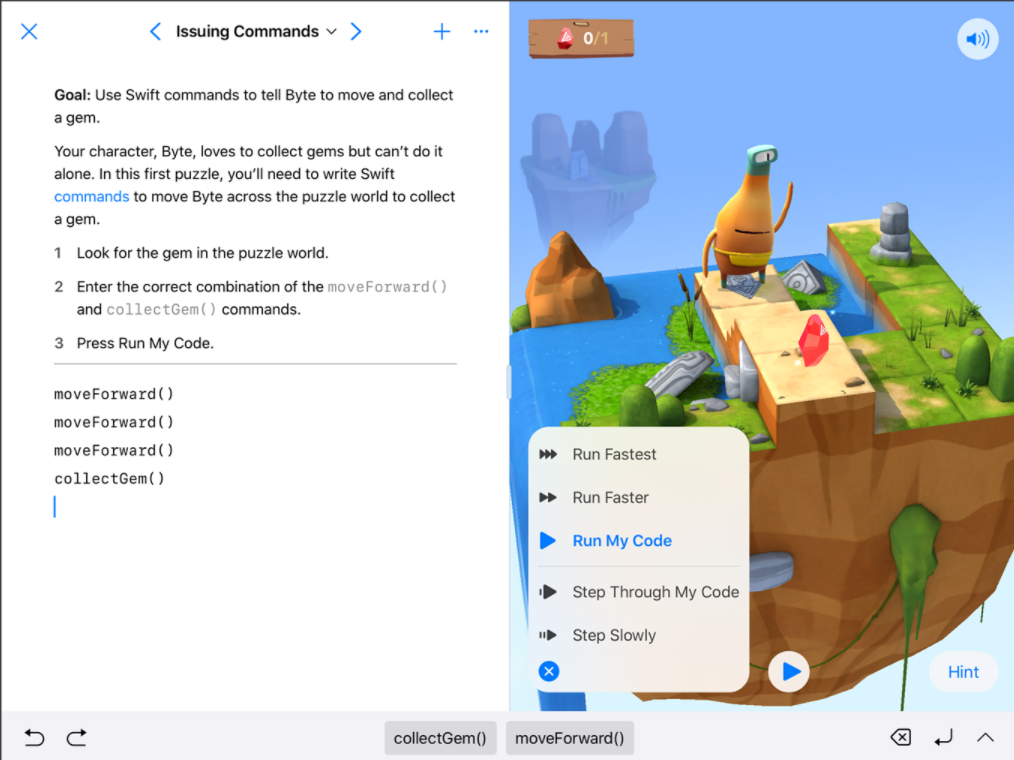
Although Swift Playgrounds isn’t the most accessible app (what with it being only available on iOS devices), it’s still one of the best teaching coding for kids. Designed primarily for iPads, this app contains dozens of fun, interactive puzzles using Swift—a powerful programming language used to develop some of today’s most popular apps.
Kids can learn fundamental coding basics like directions, terms, loops, and functions in the Swift programming language by playing the puzzles. The Playground platform also allows them to experiment and test what they know. Kids can also use their own sounds, images, and photos in the program to add a personal touch to the creations. And thanks to different coding challenges being released regularly, Swift Playground’s replay value is pervasive.
The app’s intuitive user interface and overall ease of use makes it perfect for young children and kids fairly new to programming—no coding experience required!
ROBOCODE
For kids who love robots, tanks, and winning in head-to-head battle games, Robocode may be just the game they’re looking for. It’s a complex programming game wherein players must develop the best robot battle tank to battle other robot battle tanks in Java or .NET.
The robot battles happen in real-time and on-screen so that players can closely monitor their progress. Players will code the AI for the Robocode robot battle tanks using the popular programming language Java—although other languages like C#, Scala, and Kotlin may be used. This means that the player must write out a whole script dictating the robot’s movements, actions, and reactions.
It may seem a bit intimidating at first – especially if you only have a moderate grasp of textual programming – but the thrill of the battle eventually wins you over!
We can’t recommend this game for beginners as there aren’t actual lessons or courses to cover the fundamentals. However, if you’ve already written complete, fully functional scripts using textual programming language, Robocode is a great way to test your knowledge and improve your skills.
As their motto goes: build the best, destroy the rest!
CODEMOJI
Codemoji takes a unique approach to teach STEM-focused computer programming for elementary school students. Instead of using coding blocks or text-based programming languages, Codemoji teaches kids to code using emojis—the primary language of communication among today’s youth.
Related Reading:
Codemoji is a self-styled “emoji-based” coding platform that fast-tracks kids’ coding progress by utilizing their proficiency in recognizing, choosing, and using emojis (small, colorful, digital icons used to express emotions). Every syntax element has a corresponding emoji, making it much easier for learners to understand and comprehend the element. This keeps coding for kids incredibly simple and straightforward by eliminating the concern over typographical or syntax errors.
This ultimately follows the company’s firm belief that learning code shouldn’t be hindered by technicalities or mechanics and should instead focus firmly on “creating, building, and mastering the fundamentals of code.”
Codemoji hopes to help kids understand that coding is no more complex than casual chatting by using emojis.
LIGHTBOT

At first glance, LightBot may seem like a game purely designed for beginners and first-time programmers. However, as the player progresses through the game, they’ll soon realize that it contains excellent logic activities and coding challenges for more seasoned coders, too.
This puzzle game uses clean, simple graphics and uniquely designed levels to keep you playing. And as you do, you’ll inevitably learn coding concepts and programming logic along the way!
The game’s goal is to help the robot character light up all the blue tiles, but there are extra challenges and obstacles along the way. Although there are no specific terms and definitions, things like sequencing, overloading, procedures, and recursive loops will pop up.
Available for iOS, Android, and Amazon Apps, LightBot is a fun, calming game that’s great for teaching kids how to code without making it seem like a school course or textbook subject. And based on the fact that it’s been downloaded and played by over 20 million people, we can safely say that it’s a pretty effective coding app.
OSMO
Osmo is another gaming platform that offers a variety of educational games for computer science and computer programming. Their first three games – Newton, Tangram, and Words – all received immense praise from parents and teachers alike.
Now, more than five years later, they’ve expanded their library to include Numbers, Masterpiece, Coding Awbie, Monster, and Pizza Co. All these games incorporate fun, unique, and memorable characters that children are sure to connect with. They also incorporate the basics of computer coding whilst encouraging creativity and out-of-the-box thinking!
Related Reading:
The whole Osmo brand merges tactile exploration with innovative technology to keep kids actively engaged during the learning process. What this means is that there are both physical and digital parts to the Osmo learning experience.
You can get an Osmo Base to connect your device to Osmo’s platform. You would then use physical game pieces (purchasable through their store) to create your script. Osmo’s technology then scans your creation and translates it to your device’s screen.
This mix of online and offline elements makes Osmo a great pick for parents wanting a more flexible option for their kids’ coding games.
ROBOZZLE
RoboZZle is an addictive social puzzle game that uses robots to teach programming concepts. Unlike other coding games, there is no specific coding language taught. Instead, the players are simply introduced to the fundamentals of coding without any actual text-based jargon involved. This keeps things fairly simple and therefore highly accessible to beginner coders.
Players program simple commands into a series of blocks which then tell the robot what to do. Depending on the puzzle, you can get RoboZZle’s titular robot to recurse a tree, follow a linked list, count in binary, and more. The beginning seems simple enough but, after a few levels, the subject matter becomes more extensive. The graphics are beautiful, and the user interface is generally straightforward to use.
With this in mind, we’d recommend RoboZZle for fairly young children (around 7 and up) as a supplementary course to their main computer science and/or programming education.
CODEMANCER

And last (but certainly not the least) is Codemancer, an incredibly educational fantasy game that teaches kids the magic of coding.
Designed for 6- to 12-year-old kids, this game introduces the young audience to coding basics before quickly leveling up to more complicated concepts like variables, conditionals, and functions. Players will join the female protagonist named Aurora as she struggles to become independent and stay good in a world full of physical and moral challenges.
Rich with a narrative backbone, colorful settings, and plenty of rival sorcerers and minions to keep the game interesting, Codemancer takes a unique, fantastical approach to teach coding for kids.
CONCLUSION
So, there you have it—the 21 best coding games for kids in 2021. Let’s recap the list one more time!
Table of Contents
Like I mentioned earlier, there are plenty of coding games out there in the market. If the ones we listed here don’t particularly strike your (or your kid’s) fancy, I’m confident you’ll eventually find one that does! Just remember to keep your child’s best interests in mind. A coding app or game that you feel is a real winner may not engage or entertain them. But, at the end of the day, they’ll be the ones playing the game; therefore, their wishes should be considered.










